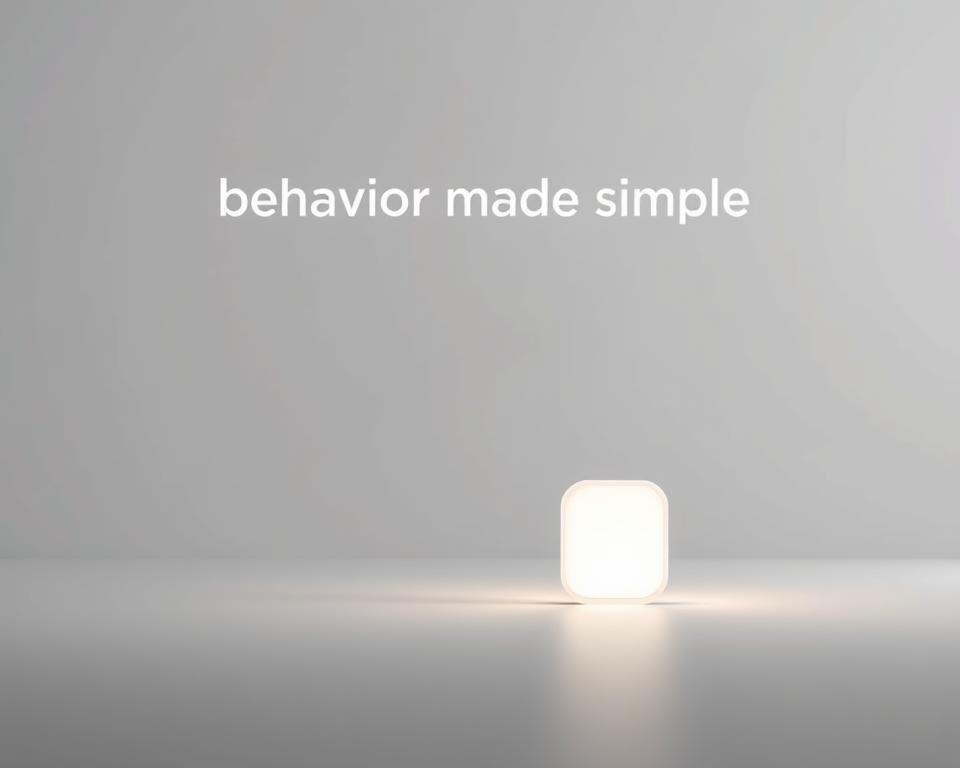广告
2025年行为初学者清单 opens with a clear question: are small, respectful changes enough to ease daily friction at home, in school, and around your neighborhood?
In 2025, routines and short, steady investments of time matter more than complex plans. Ten to fifteen minutes of one-on-one with each child can boost connection and cooperation. Co-created rules cut down on power struggles. Positive language and clear instructions guide action. You will learn practical ideas that reduce problems and fit busy lives.
Parents and educators will find respectful strategies you can try right away. Set boundaries that separate the person from the action. Use role-play and do-overs instead of escalating time-out punishments. In classrooms, non-verbal cues, engaging lessons, and shared routines help people stay on task and build self-management.
Expect checklists you can use this week, with real examples for home, school, and community. Verify each approach and apply them responsibly. Keep learning as needs change.
Introduction: why Behavior tips matter in 2025 for home, school, and everyday life
If you’re new to guiding children, begin with clear expectations and short, steady steps. As a beginner, you are building a foundation. Focus on small habits that fit your day instead of complex systems.
广告
Why this matters now: Consistent attention and simple routines strengthen connection. Ten to fifteen minutes of one-on-one time, co-created rules, and calm language reduce common problems quickly.
What “beginner” really means when you start shaping behavior
Being a beginner means you center on the basics: connection, clear expectations, and predictable transitions. You test one routine at a time and adjust as you learn what works for each child.
How this checklist helps you act with confidence and respect
This checklist gives you a way to set realistic goals and track progress. Use example scripts, visual aids, and simple guidelines that parents and families can use without special tools.
广告
- Set one goal and practice it daily.
- Use positive language and brief prompts.
- Adapt the same approach for home and school for consistent results.
Build connection first: attention, one-on-one time, and the behaviors you want to see
A steady rhythm of focused minutes helps children feel seen and makes daily routines easier.
Schedule daily “special time”—10–15 minutes of your full attention for each child. No phone, no multitasking. Let them choose an activity within your boundaries.
Daily one-on-one time: 10-15 focused minutes per child
Use a simple script to begin: “I’m all yours for 15 minutes. You choose what we do. I’ll follow your lead.”
For older children, ask what they prefer (walk, game, or cooking) and agree on the minutes and boundaries together.
Spotlighting positive actions: catch, name, and reinforce
Keep attention warm and descriptive: “I notice how carefully you’re building that.” Name the behavior you want see: “You used waiting words.”
- Use small, immediate rewards sparingly (extra story pages or choosing a song) so pride stays internal rather than transactional.
- If siblings interrupt, reassure them their minutes are coming and use a visual timer to show order.
- Document daily wins so parents can track which behaviors improved with steady attention.
When you miss a day, restart without guilt. Consistency over time matters more than perfection for lasting change in behavior.
Make time work for you: routines, transitions, and mindful screen time
Make your schedule an ally so the whole family moves with less stress. Clear, short routines help each child know what comes next and reduce repeated reminders.
Morning-to-bedtime routines that reduce friction at home
Map one simple sequence for morning and one for evening. A short example: wake, dress, eat, pack, out. Evening: play, dinner, bath, read, sleep.
Transition cues and visual schedules for different ages
Post routines where kids can see them. Use pictures for pre-readers and checklists for older kids.
- Use a two-minute warning, a song, or a hand signal as a cue.
- Offer small choices inside the sequence to boost cooperation.
- Practice mock runs when things are calm so the body learns the flow.
Screen time boundaries: expectations, co-viewing, and alternatives
Set simple guidelines together: what, when, where, and for how long. Co-view when you can and talk about what you watch.
Keep a ready bin of art supplies, movement cards, or an outdoor micro-challenge to make off-screen options easy. For each age, tailor supports—pictures for toddlers, timers for school-age, shared plans for teens.
Reinforce on-task behaviors during transitions: name the action quickly and point to the visual rather than add a long lecture. These small moves save time and keep your routines working.
Rules, expectations, and fair results: consistent systems without power struggles
Create simple, shared rules so everyone knows what to expect and why it matters. A short, co-created list gives your family a clear map for daily life. Keep language positive and tied to values, and review the list weekly until it becomes routine.
Co-creating a short list and previewing the result of choices
Hold a brief family meeting to pick 3–5 rules. Examples: “We use respectful words,” “We help clean shared spaces,” and “We finish homework before games.”
Write them in the positive, post them where everyone sees them, and role-play what success looks like. Preview the result of choices in advance: for instance, “If toys aren’t put away, they rest on the shelf until tomorrow.” Predictable outcomes help children and parents follow through.
Designing consequences and rewards that teach, not shame
Keep consequences related, reasonable, and respectful. Use them to teach the next step: name the action, state the expectation, and offer a clear, calm result. Avoid arguing—restating the rule and following through works best.
- Use small rewards (choose a game or song) and fade them as good behaviors stick.
- Check your system for fairness and revise wording if a rule is hard to apply.
- Celebrate small wins together to keep motivation steady.
Use positive language and clear instructions to guide behavior
When your language points to the desired action, kids follow more easily. Lead with the action you want, then the reason. Short phrases cut confusion and speed compliance.
From “Don’t run” to “Use walking feet”: brief swaps that stick
Simple swaps work:
- “Use walking feet” instead of “Don’t run.”
- “Use a calm voice” instead of “Stop yelling.”
- “Ask for a turn” instead of “No grabbing.”
- Lead with the action, then the reason: “Hang your backpack on the hook so we keep the floor clear.”
Keep instructions to 5–7 words and give one step at a time. Check understanding with a quick, “What’s first?” Pair your words with a gesture or visual cue so repetition drops.
Model the action—show “walking feet” and say, “You used walking feet in the hall.” For parents, jot five swaps by the door to make new words automatic. If an instruction doesn’t land, restate once and then guide calmly.
Coach problem-solving: identify triggers, do-overs, and calmer ways through conflict
Spot the common sparks that lead to hard moments and use small coaching moves to guide a better next step.

Find the why: notice transitions, hunger, noise, or a task that feels too big. These triggers often explain the problem behind the action.
Ask, “What problem is this trying to solve?” That question helps you choose training that matches the need.
Do-overs and short role-play
Use a quick do-over: “Let’s try that greeting again—eyes up, friendly words.” Repeat once and let the child practice.
Role-play one specific scene (asking for help, waiting a turn) so kids learn replacement skills step by step.
Conflict questions that guide solutions
When siblings or peers clash, stay neutral and ask three simple prompts:
- “What happened?”
- “What do you each need?”
- “What is one fair way forward?”
Help them generate options and pick one to try. Avoid choosing a winner; focus on repair and the relationship.
Small training moves to build skills
Teach a calm-down breath, a pause phrase like “I can try again,” and a repair step: “How can I fix this?”
Keep a short log of triggers and what worked so you can personalize supports over time.
Classroom-ready strategies for teachers and parents who support schools
Start each school day with a clear, visible plan so students enter class ready to focus. A short visual agenda on the board helps children see the warm-up task, the objective, and the first instructions.
Co-create short, positive rules with your class to increase buy-in. Keep them visible and revisit them briefly each week.
Routines and student-made rules that boost attention and self-management
Use a posted routine that shows the flow: warm-up, main task, reflection. Invite students to name one rule and post it.
Non-verbal cues—proximity, hand signals, or a quiet chime—let you redirect without breaking momentum.
Stimulating lessons and positive language to keep classes on track
Vary methods: quick think-pair-share, hands-on tasks, and brief movement breaks to reset focus. Give clear, brief instructions and check understanding with a thumbs signal before students start.
- Offer consistent small rewards tied to specific actions: verbal acknowledgement, classroom roles, or extra problem choice time.
- Provide task scaffolds like sentence starters and worked examples to reduce frustration and off-task work.
- Share routines and guidelines with parents so home support matches class expectations and progress.
Review one strategy weekly and adjust. Small, steady changes build stronger self-management and kinder classroom dynamics.
Behavior tips
Start with a few practical moves you can test this week at home and in class. Keep steps small, protect the minutes, and adapt what works for your child and the group.
- Schedule 10–15 minutes per child, three days this week; mark the time on your calendar so it stays real.
- Pick one routine (morning or bedtime) and post a 4–6 step visual; practice it once when everyone is calm.
- Choose three positive language swaps and use them daily with kids at home or in class.
- Co-create or refresh three rules in a short meeting; preview what happens when rules are followed and when they aren’t.
- Add one non-verbal cue for transitions and one brief movement break between tasks to balance energy.
- Set one screen time expectation (what, when, where) and have one off-screen alternative ready to go.
- Run a 3-minute role-play of a tricky moment to build skills before the real situation.
- Catch and name three specific positive behaviors each day; offer a tiny rewards menu tied to effort.
- Write one repair script for conflicts—“What happened? What do you need? One fair way?”—and keep it visible.
- At week’s end, reflect: which actions worked, what to adjust, and one or two ways to build on progress next week.
Try, adapt, repeat. Small actions over time shape steady change for parents, teachers, and kids.
结论
A short plan you can use tomorrow helps turn ideas into steady results. Pair daily attention with clear expectations so each child and group of children know what comes next. Small, steady time investments change behaviors more than long lectures.
Focus on connection first. Use predictable routines, simple rules, and calm consequences that teach the next step. When a problem appears, look for triggers and try one strategy before adding more.
Align home and school approaches, track small goals, and celebrate progress. Apply these ideas responsibly, verify methods with trusted sources, and invite feedback from families so your skills and systems grow with your kids and class.



